Lions
A lion in the wild usually makes no more than twenty kills per year.
The female lion does 90% of the hunting, whilst the male lions patrol the territory and protect the pride.
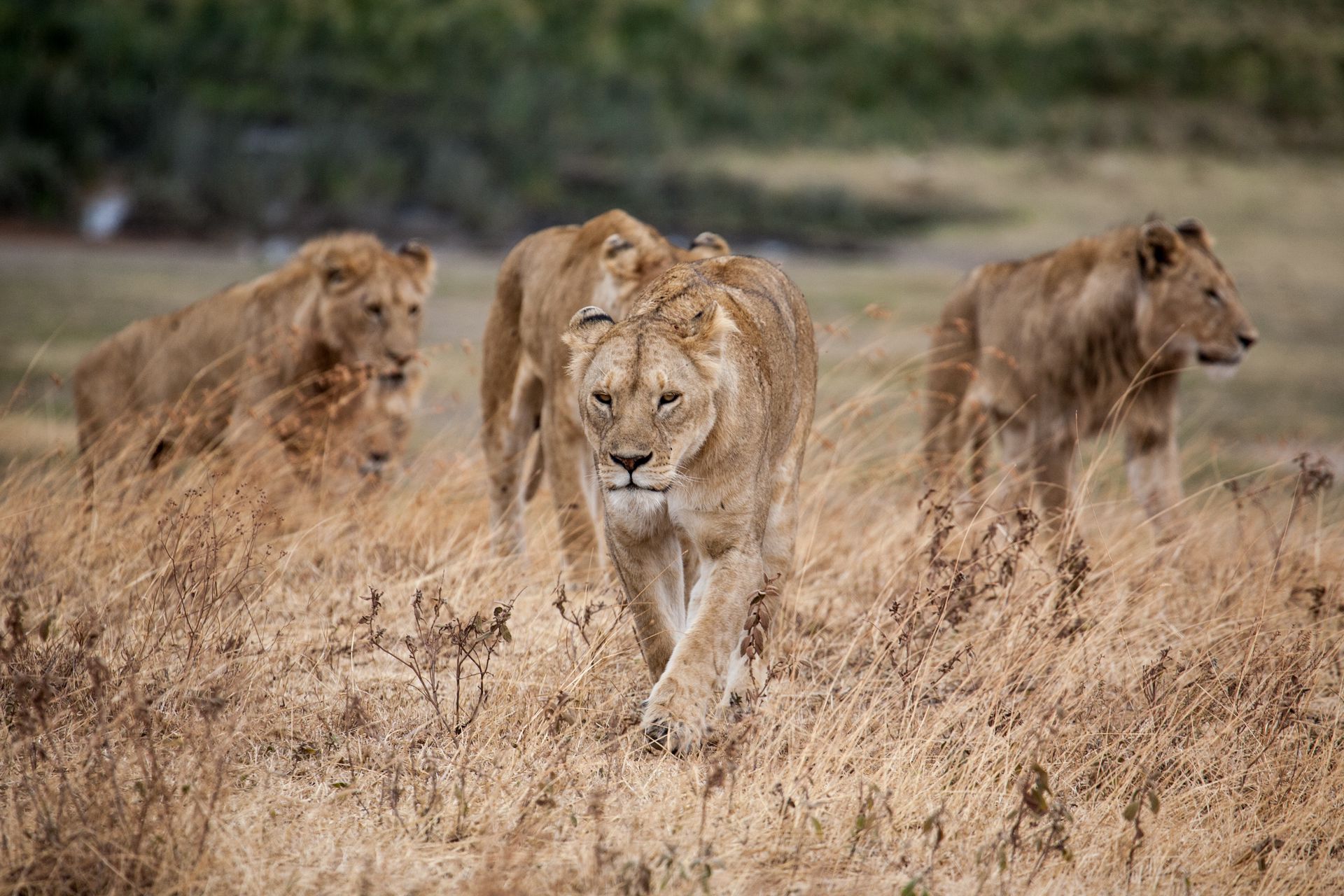
An adult lion's roar is so loud it can be heard up to 8 km [5 miles] away.
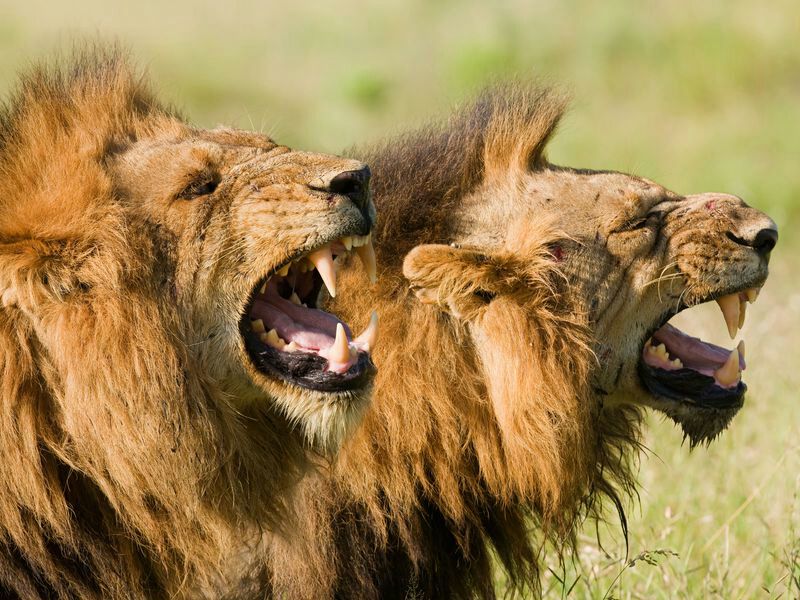
Lions are the only cats with manes.
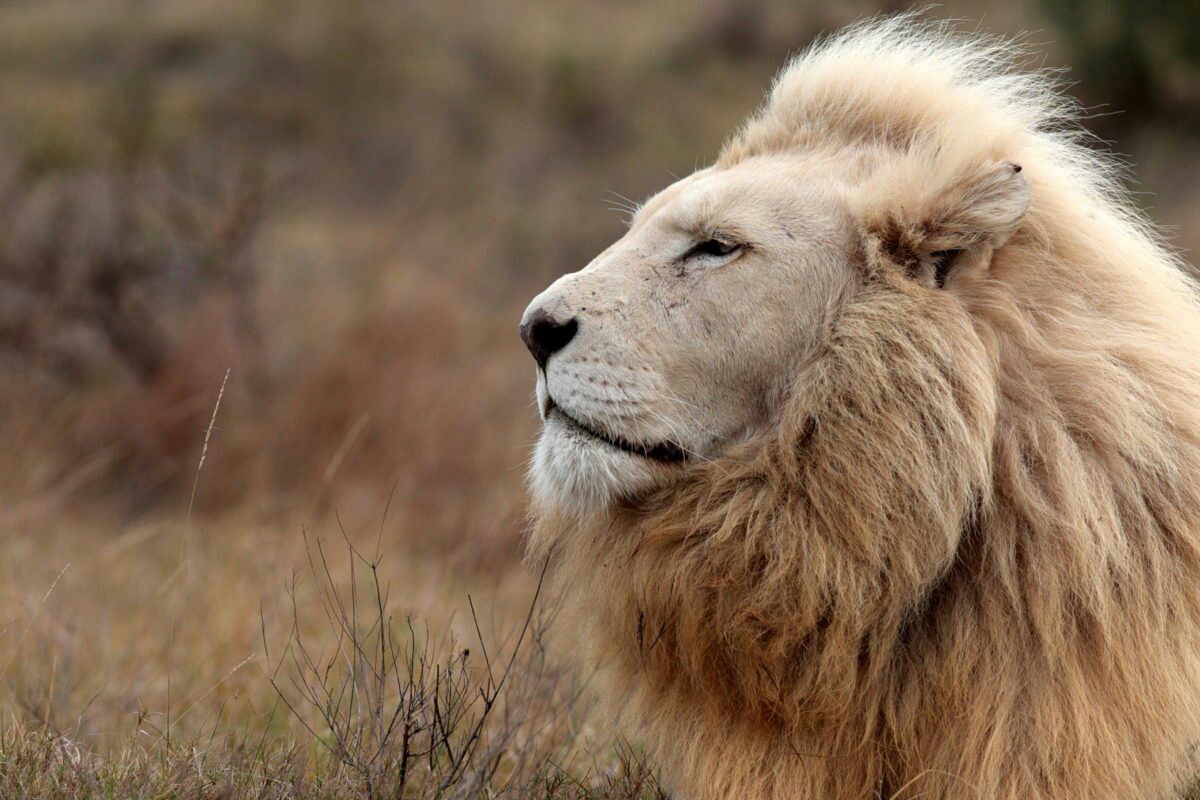
The name for a baby lion is a cub, whelp or lionet.
'Simba' is actually the word for lion in Swahili.
The lion was once found throughout Africa, Asia and Europe but now exists only in Africa with one exception. The last remaining Asiatic lions are found in Sasan-Gir National Park in India, which was primarily created to protect the species. Currently, there are approximately 350-400 lions in the park. Two thousand years ago, over a million lions roamed throughout regions that covered Europe, Syria, Israel, Iraq, Pakistan, Iran, and India. In the 1940s, lions numbered 450,000. Today, there are only 15,000–32,000 left.
Their heels don't touch the ground when they walk.
Among all the big cats, lions nap the most, sleeping up to 22 hours a day. By sleeping so much, lions can also decrease their energetic needs.
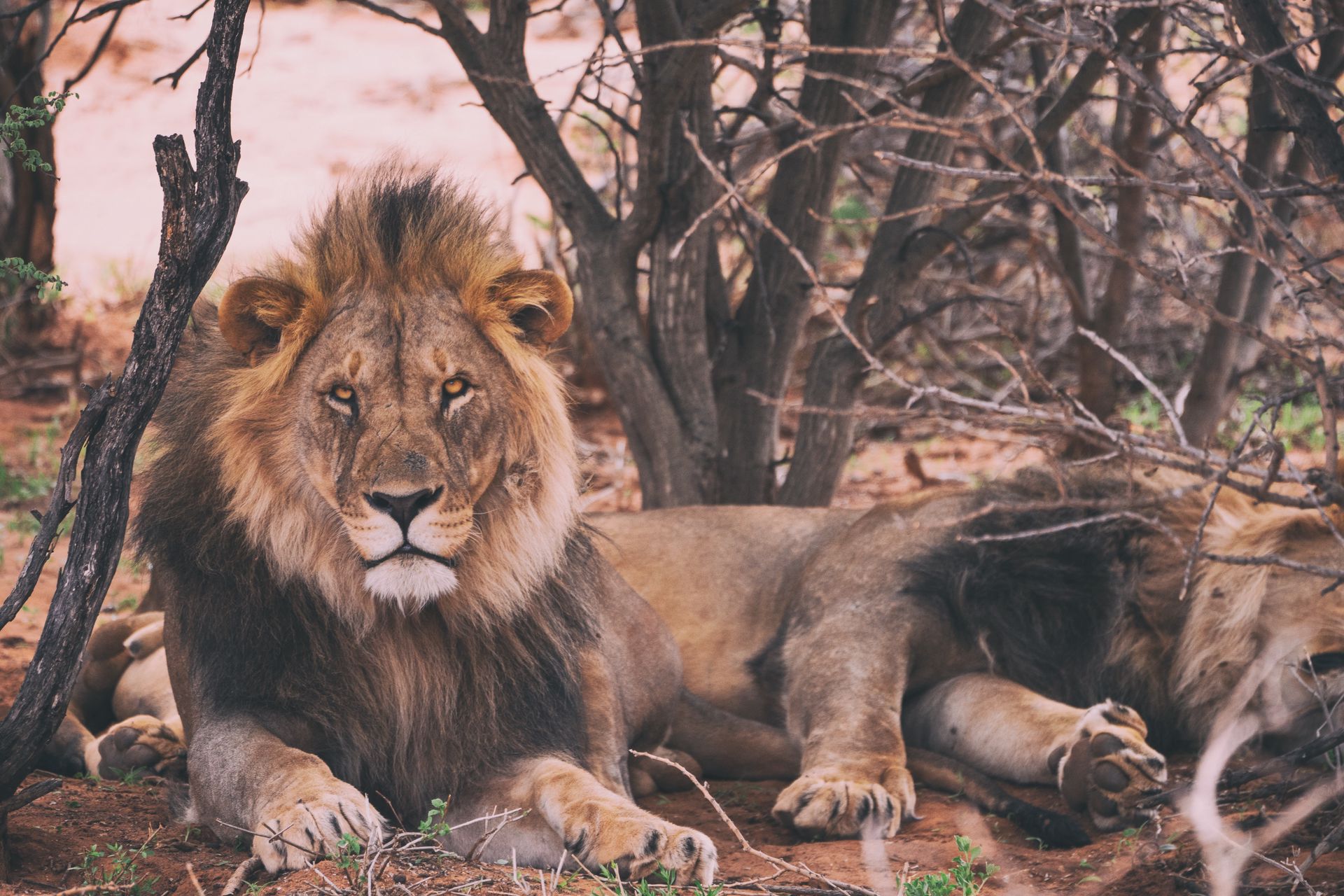
Aslan is the Turkish and Mongolian word for "lion." It is also the name of the lion in C. S. Lewis' The Chronicles of Narnia.
Lions are the second largest of the big cats, after tigers.
The darker a male lion's mane is, the older he is.
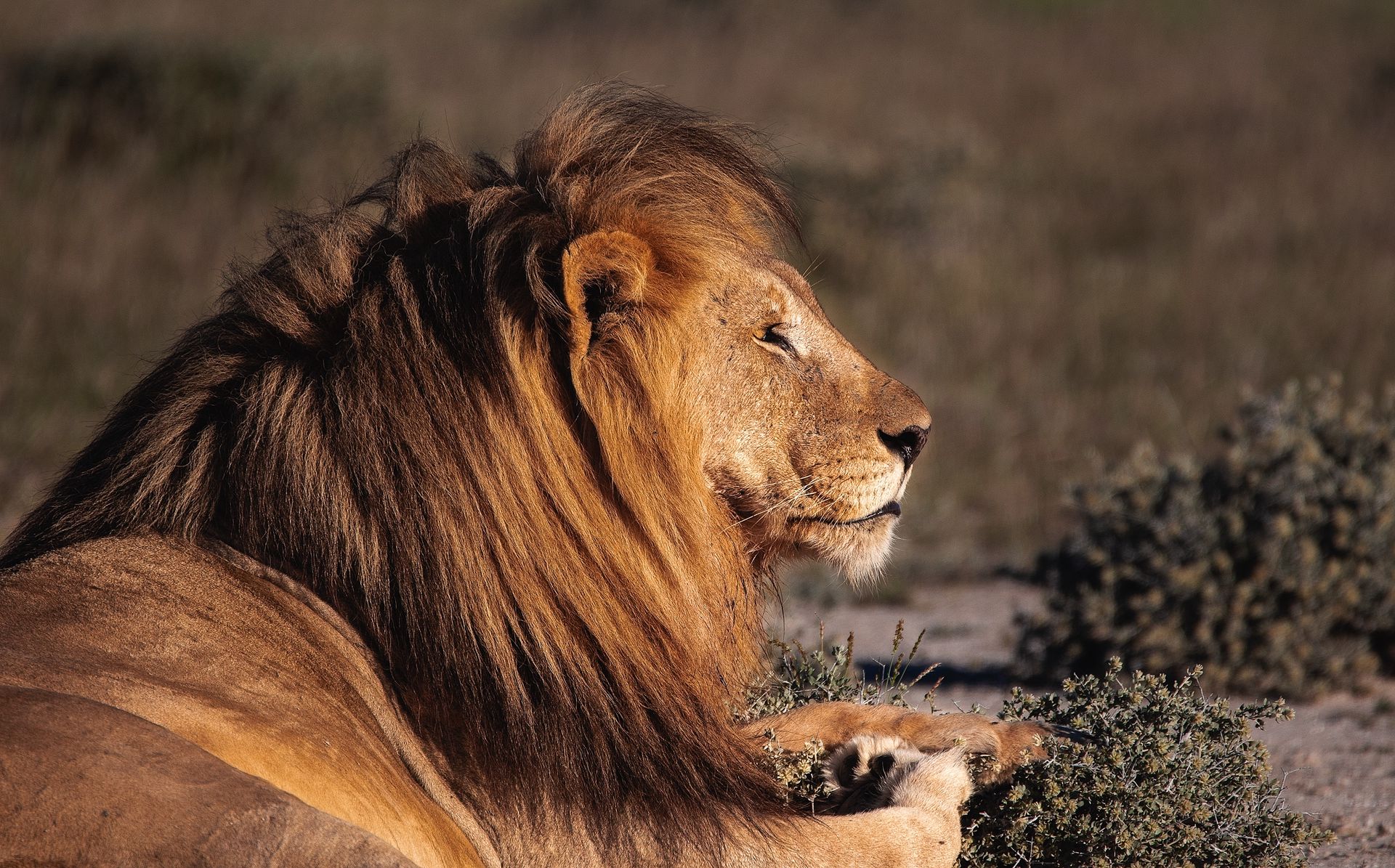
Female lions prefer to mate with males that have the longest and darkest manes.
Unlike most other cats, lions are great swimmers.
A lion can leap as far as 11 m [36 ft].
Lions eat about 8 kg [18 lbs] of meat per day. That would be like a human eating more than 70 hamburgers.
The lion is the only member of the cat family that has a tasseled tail. The tassel doesn't just look good, it also relays messages such as "come this way." A tassel first appears when a lion is 5–7 months old.
Only about 1 in 8 male lions survive to adulthood. A majority of lions die shortly after being kicked out of their pride around the age of 2.
When taking over a new territory and pride, some male lions will form a "coalition," or a group of 3 or 4 males. They will fight the resident male lion, often to the death, and kill all his cubs.
In 2002, much to the surprise of conservationists, a lioness adopted and protected a baby antelope. However, two weeks later, a male lion ate the baby while the lioness slept. The lioness appeared to be stricken with grief and walked around roaring in anger.
As tiger bones are becoming scarcer, poachers are turning toward lion bones to supply the intense demands of traditional medicine in Asia.
Trophy hunting is devastating for lions for several reasons. First, when an adult male (the most sought-after trophy) is killed, his death destabilizes and may destroy an entire pride. Second, it wipes out the genes of the largest and most healthy males.
A male lion can stretch up to 10 feet long and weigh 200 kg [450 lbs], about the same as eight or nine small children or over 50 pet cats. Females typically weigh 140 kg [300 lbs].
Although the lion is known as "the king of the jungle," lions do not live in jungles. They live only in grasslands and plains.

Lions can run up to 80 kmh [50 mph], but only in a straight line and only for a few seconds at a time. Consequently, lions get as close as they can to their prey before they start the chase.
The two majestic stone lions that stand guard outside the New York Public library are named Patience and Fortitude. They were named in the 1930s to reflect the qualities New Yorkers exhibited during the Great Depression.
The two bronze lions outside The Art Institute of Chicago were made for its opening in 1893. The south lion is (unofficially) named "In an Attitude of Defiance," and the north lion is named "On the Prowl."
A Turkish proverb states: "A lion sleeps in the heart of every brave man."
Male lions are the only big cats that look different than the females of the species.
A lion's bite is 30 times stronger than the bite of a housecat. They actually have the weakest bite of all the big cats, at 4000 kpa [600 psi]. The jaguar has the strongest bite force of any big cat at 14000 kpa [2000 psi].
The lion is the most social of all big cats.
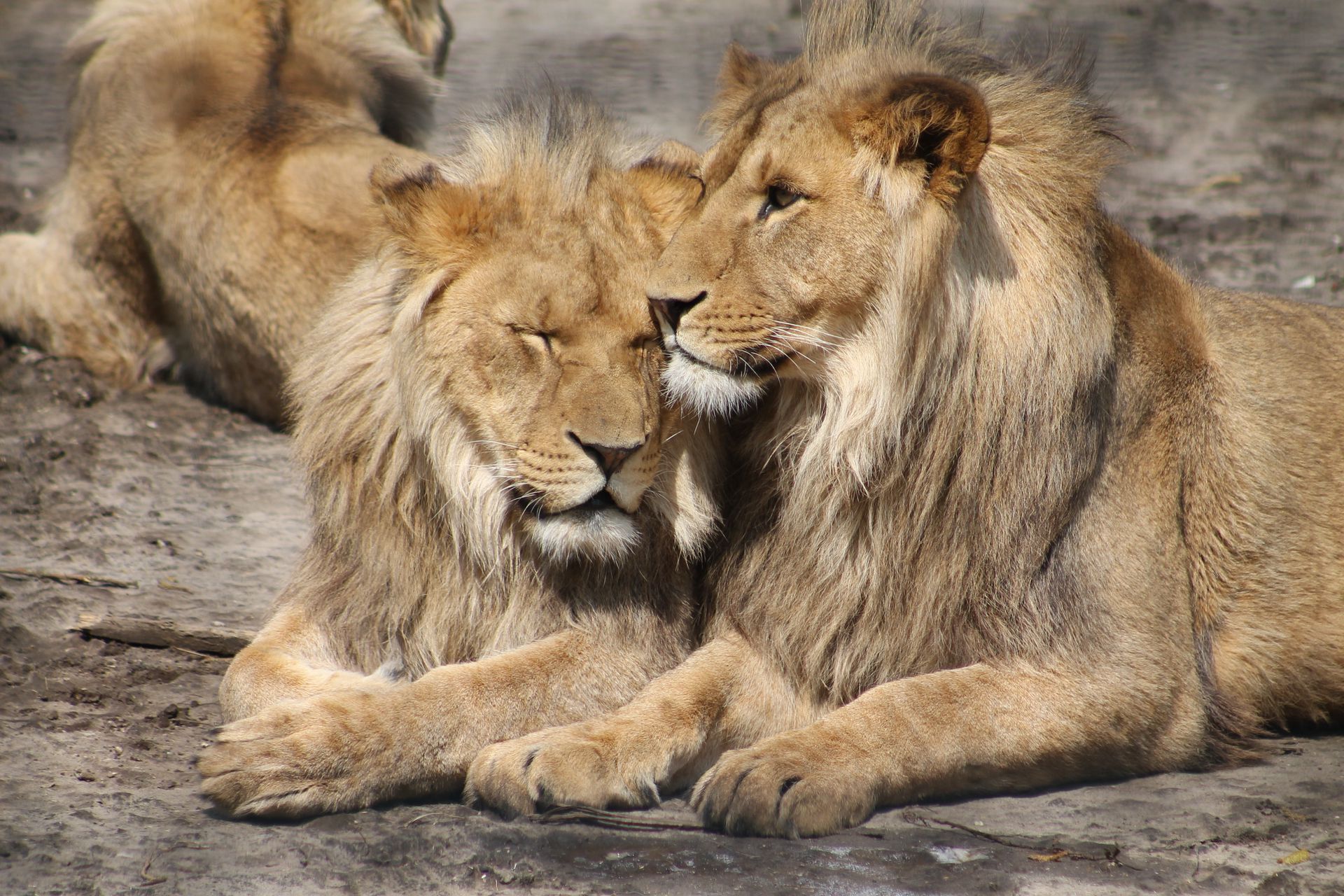
Lions have been used as symbols in several famous literary works, including the Cowardly Lion in The Wonderful Wizard of Oz and Aslan in The Chronicles of Narnia. The lion is also used as a symbol for the Gryffindor house in the Harry Potter series.
In 2015, a female African lioness attacked and killed a 29-year-old American woman through a jeep window. Signs throughout the park warned visitors to keep windows rolled up. After an investigation, park officials decided not to execute the lioness and instead moved her to a more private part of the park.
The most dangerous land animal in Africa is not the lion but the hippopotamus. Hippos kill about 500 people a year; lions kill around 100. The deadliest animal on the planet, however, is actually much smaller than both: the mosquito, which causes 725,000 deaths per year.
Tanzania has the largest population of lions in Africa.
White lions are still African lions but they exhibit a recessive trait derived from a less severe mutation that causes albinism.
Asiatic lions, cousin of African lions, once were found from India all the way to Europe. Today, there are fewer than 300 left. The only place they live in the wild is in Gir National Park in India.
In the wild, male lions live for 12–16 years. Lionesses live for about 15–18. In captivity, male lions can live over 20 years.
Lions are not as fast as other types of big cats, such as leopards and tigers. They hunt using teamwork and rely more on strength than speed to catch and kill prey.
Male lions may mate up to 100 times in two days to ensure that the female is pregnant. Each mating lasts only a few seconds. Female lions are pregnant with their cubs for about 3½ months.
Lion prides are usually described as matriarchal, with communal care for the young. Most lionesses in a pride are related and remain in the same pride for life. Only two or three lions within a pride will be males, who are either brothers or pride-mates.
A dominant male in a pride has two jobs. First, he must mate with all the females in the pride and, second, he must defend the pride from other males who want to take over. Male lions usually can keep control over a pride for 4 years.
Lions hunt mostly at night and have about a 50% success rate.
A lion pride's territory can stretch up to 100 square miles and can cover grasslands, open woodland, and scrubs.
Lionesses will often bring back a small animal, such as a baby antelope, alive so that the cubs can practice their hunting skills.
Lions come in several different colors, including tan, brown, yellow, and even red.
Lions live in prides of 2 to 40 members, with the average pride consisting of 13 animals.
There are two surviving species of lions: African and Asian. There are about six subspecies of African lions.
A male lion's mane starts to grow at about 18 months old and will continue to grow until a lion is 5 years old.
The famous MGM lion is named "Leo the Lion" and has opened every one of its movies since 1929. Five different lions have been used for MGM's iconic feline. Around the circle that frames Leo is the MGM motto: Ars Gratia Artis ("Art for Art's Sake").
Lions are the national animal of several countries, including Albania, Belgium, Bulgaria, England, Ethiopia, Luxembourg, the Netherlands, and Singapore.
A lion's pupil is three times as big as a human's. But a lion can't move its eyes side to side very well, so it moves its entire head when it needs to look in a different direction. Domestic cats have vertical slits, but bigger cats, like tigers and lions, don't.
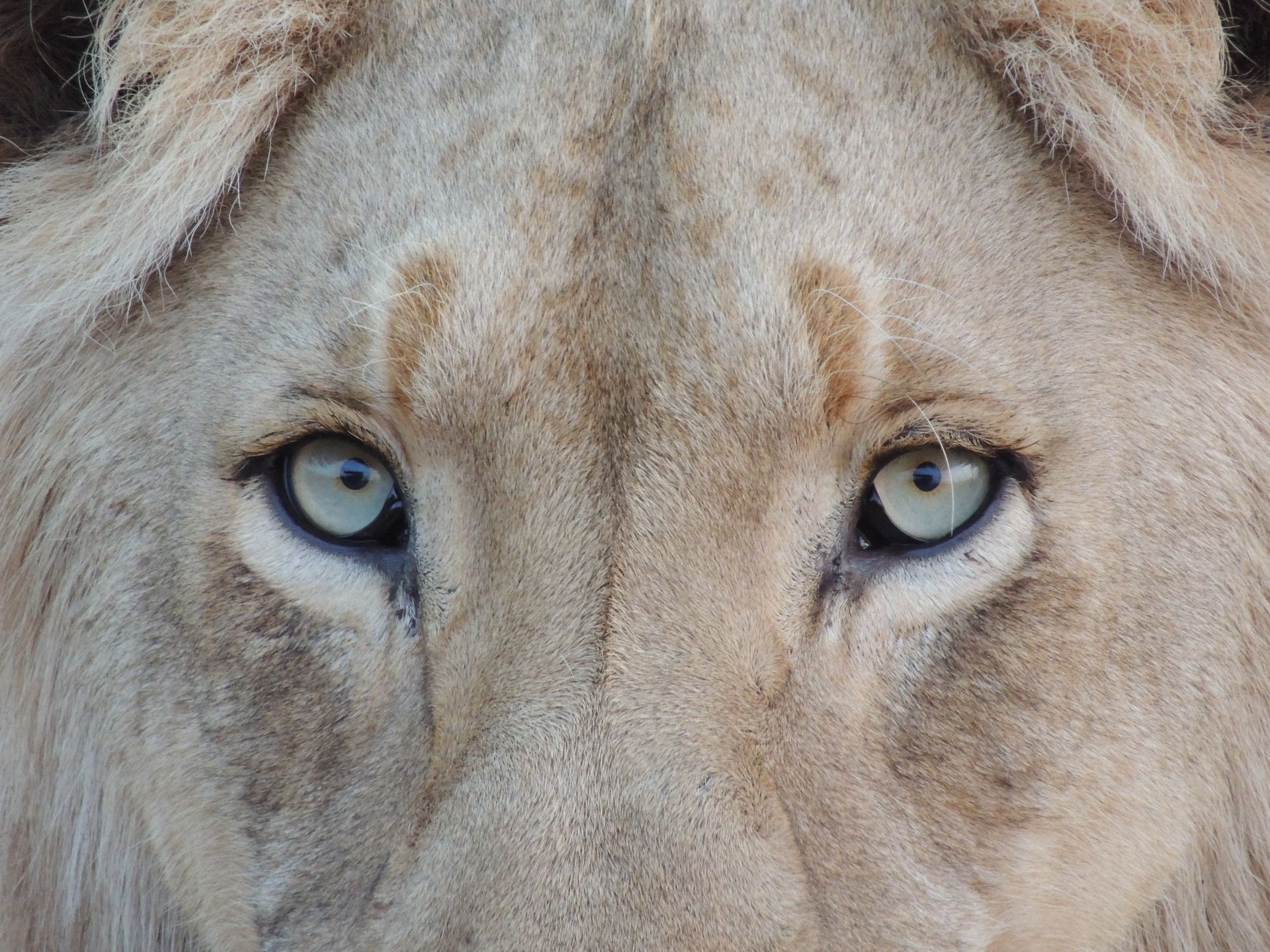
Lions can see six times better in the dark than a human. At night, a reflective coating on the back of their eyes helps capture moonlight. Additionally, they have a white patch of fur underneath their eyes that helps to reflect even more light.
If a lioness breeds with a male leopard, their offspring is a leopon. The head of a leopon is similar to that of a lion while the body more closely resembles a leopard. A leopon is more often produced in captivity than in the wild. A lioness and male jaguar hybrid is known as a jaglion. If a lioness breeds with a male tiger, the resulting hybrid is a tigon. A liger is the offspring of a male lion and tigress. Each has parents from the same genus but of different species.
Lions will scavenge whenever they get chance. In fact, scavenging provides more than half of a lion's diet.
The scientific name for lion is Panthera leo. The lion is one of the five big cats in the genus Panthera and is a member of the family Felidae. The other four members of the genus are the tiger, jaguar, leopard, and snow leopard.
The most common lion is the African lion, and with their tan coats and loud roars, they are the animals most people think of when they think of lions.
It is a common belief that lion claws are retractable. Actually, they are protractible, which means that when the animal is at rest, the claws are sheathed. This protects the claws and helps keeps them sharp. If their claws were retractable, lions would need to walk around tensing to keep the claws sheathed. Lion claws are 8 cm [3 in] long, about the length of a human finger.
A lion can first begin to roar at the age of 2.
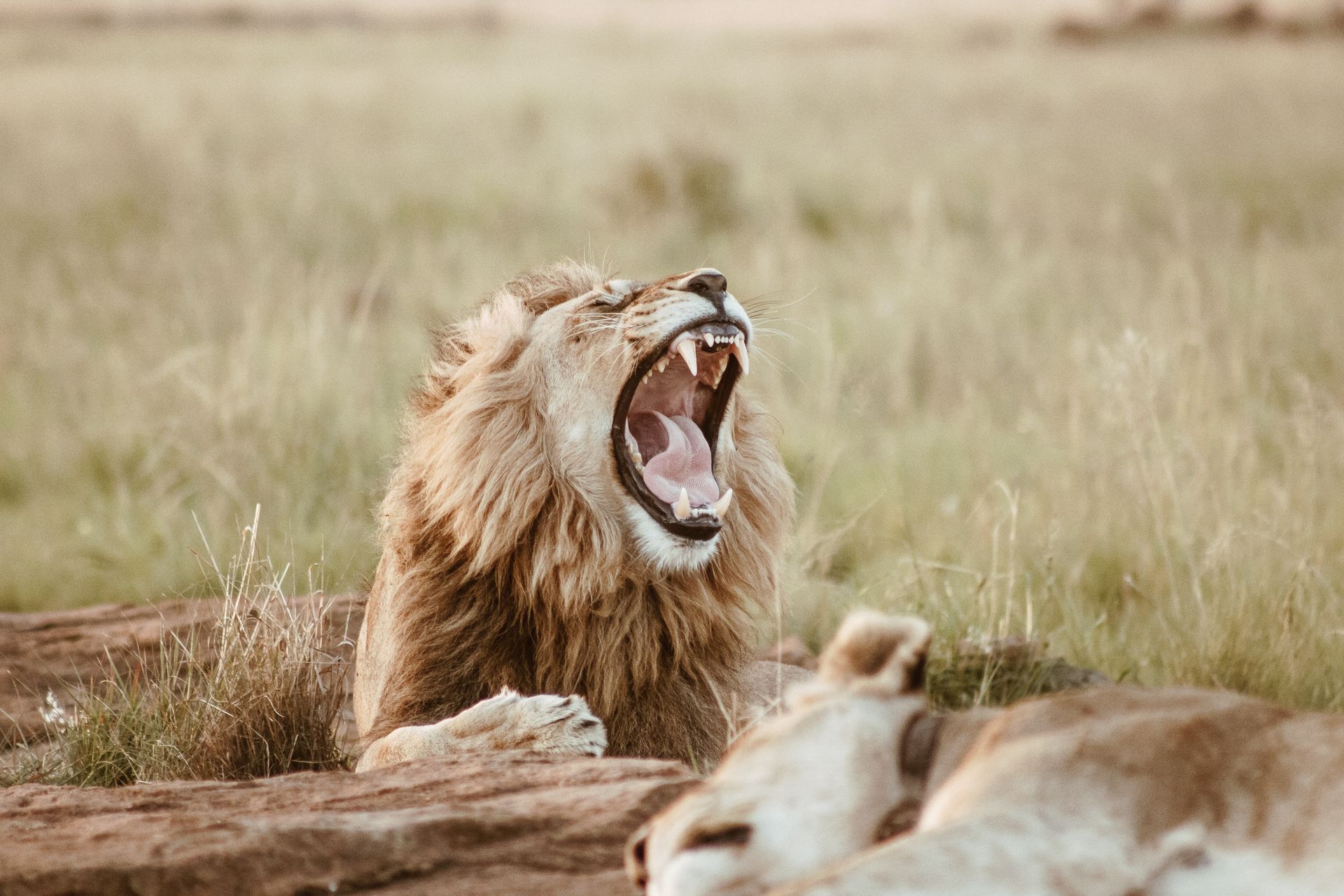
The lion has a special tongue that is rough enough to peel the skin of their prey away from the flesh. If a lion licked the back of a human's hand just a few times, it would peel away much of the skin.
Lions can open their jaws up to 30 cm [1 ft], which is larger than a human head. This gives them one of the biggest mouths in the animal kingdom.
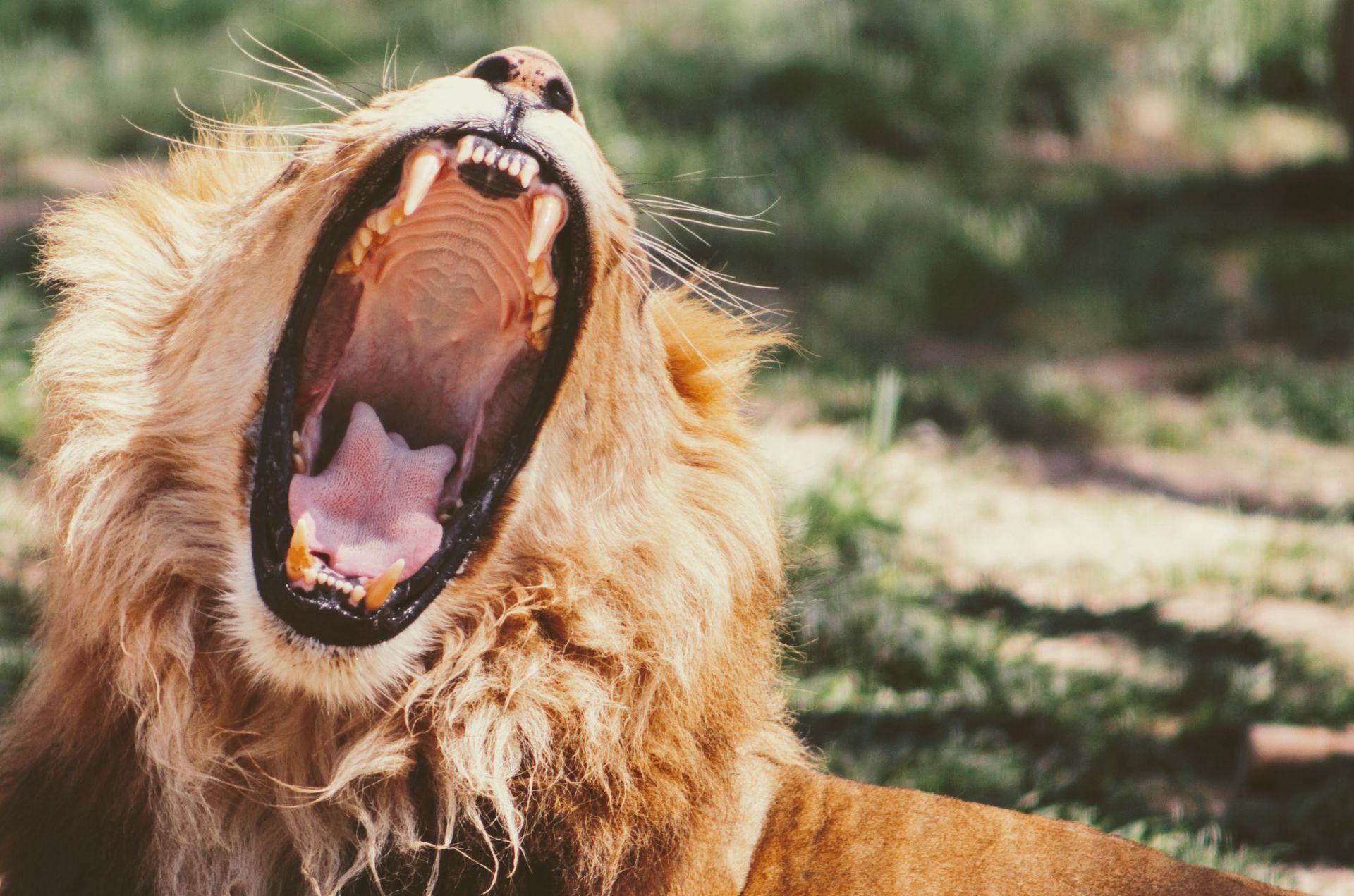
The African lion's loose-skin belly allows it to be kicked by prey with little chance of injury.
Lions have an interdigital scent gland between their toes, which is one reason why they like to scratch trees. Not only are they sharpening and cleaning their claws, they are also marking their territory.
Lions do not purr. The only member of the big cat family that does is the leopard.
At the base of each lion's whisker is a black spot. The patterns these spots make are unique to each lion, similar to a human's fingerprint. Scientists are able to tell lions apart by looking at these patterns.
When a lion curls up its top lip and pulls a funny face, it is usually using its Jacobson's organ, which is a small area on the roof of the mouth that allows a lion to "taste" the air. By sticking out their tongues and showing their teeth, which is known as the "flehmen response," they can determine if there is food close by and if it's worth eating.
Lions have a well-developed sense of hearing, which is enhanced by movable ears that can adjust to the direction of a sound. A lion can hear prey up to 1.6 km [a mile] away.
A lion's body is the foundation of one of Egypt's largest single structures, the Great Sphinx.
The lion hunt is an ancient symbol. Ancient political leaders would often draw their legitimacy from depicting their triumph over a lion.
In Botswana, 90% of the free-roaming lions are supposedly infected with FIV, the feline equivalent of human HIV.
Since the origin of civilization, images of lions have been used to represent majesty, awe, and leadership. Their depictions can be found in most civilizations including Paleolithic cultures, Egyptian, Grecian, Roman, Middle Eastern, Persian, Jewish, Christian, many gnostic traditions, Arthurian legends, Islamic traditions, Hindu-Buddhist traditions, and Chinese and Eastern Asian traditions.

Lionesses usually spend their whole lives in the same pride they were born in, while most male lions leave their prides when they are a few years old. If a lioness leaves a pride, she usually is not welcomed into a new group of lions and typically does not survive long.
Famous leaders have used lions for nicknames, including Richard the Lionheart; Robert III, "the Lion of Flanders"; and "Lala Lajpat Rai, "The Lion of Punjab."
Damnatio ad bestias, Latin for "damnation to the beasts," was a type of Roman capital punishment in which criminals and others were executed by wild animals, such as lions.
Bulgaria's currency is named Leva, which means "lion" in Old Bulgarian.
In England, several kings kept lions in the Tower of London as part of "The Royal Menagerie." The animals were symbols of power and as objects of curiosity in the 13th century.
A lion can travel more than 19 km [12 mi] in a single day or night.
Bạn đang đọc truyện trên: AzTruyen.Top